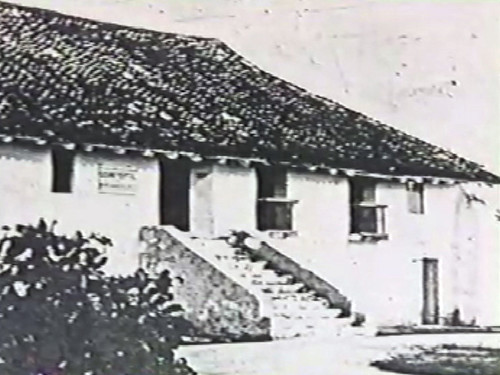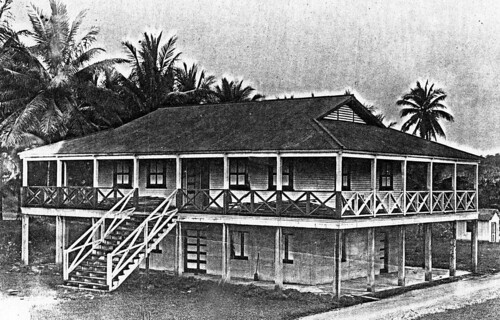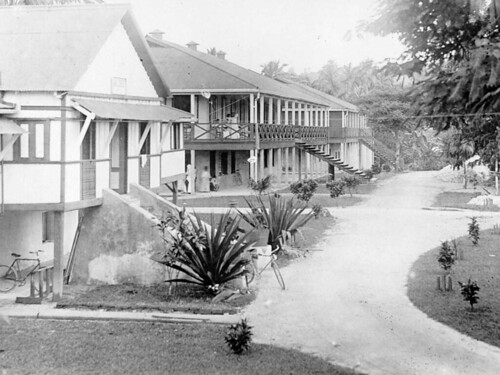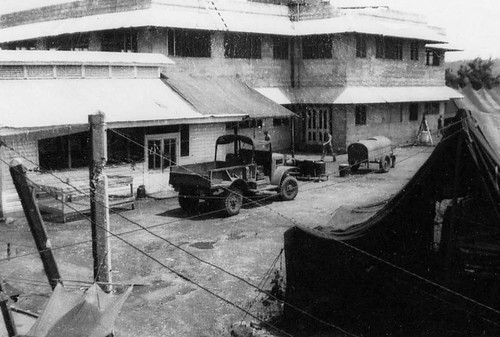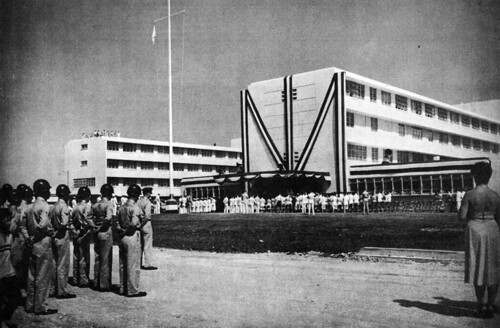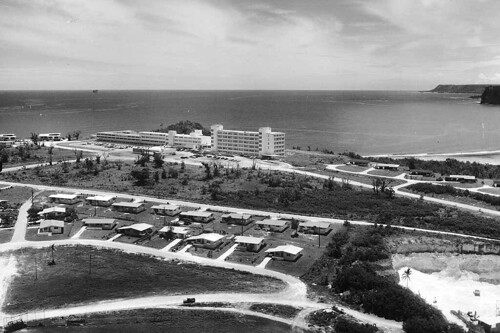First facilities
The first medical facilities and dispensaries of the US Naval Era (1898 – 1941) were established shortly after the Spanish American War in 1898, recorded as early as 1899. In this first year, Naval officials estimated that 1,141 indigenous CHamorus received medical care. Since roads remained under developed and hazardous, the Navy also provided a portable clinic that traveled to and from different points around the island.
A “leper” hospital that was destroyed by a typhoon in 1892 was rebuilt in 1899 in the western coastal village of Asan; however, a year later it was demolished by a storm. The US Congress appropriated funds for the treatment of leprosy (Hansen’s disease) patients in 1907, at which time 85 people were diagnosed as suffering from the disease. In 1902 a leper colony was established in the Ypao area of Tumon.
First permanent hospital
In 1901, the first permanent civilian hospital was established in the island’s capital Hagåtña. Naval Governor Seaton Schroeder’s wife, Maria, spearheaded the development of the facilities, which were later named in honor of her efforts. The Maria Schroeder Hospital served as a municipal hospital until 1910 when it became Ward I of the US Naval Hospital Guam. The medical facility served both CHamoru and military patients though not many CHamorus, besides those from Hagåtña, made use of the facility.
A few years later, another governor’s wife, Susan H. Dyer, made efforts to open a hospital exclusively for the care of women and children. Named the Susana Hospital in Mrs. Dyer’s honor, the facilities were set up alongside the Maria Schroeder Hospital though they were destroyed by an earthquake in 1909. The hospital was rebuilt on the same property in 1910 with money appropriated by the federal government, and became Ward III of the Naval hospital. A second Susana Hospital was built in 1911.
Outpatient clinics
A 30-bed civilian tuberculosis hospital was constructed in 1916 to relieve the pressure of overcrowding at the main hospital. In 1920 outpatient clinics staffed by Navy corpsmen were erected in six outlying villages. Aid stations staffed by patrolmen or school teachers, trained in first aid, were also established. The civilian tuberculosis hospital was used until 1930 when it became necessary for the tuberculosis patients to return to the hospital’s main facilities. Another two-story concrete structure was being constructed but not completed due to the Japanese invasion in 1941 during World War II.
World War II destroyed hospitals
Guam’s medical facilities were destroyed during World War II except for the tuberculosis wing of the hospital. When Guam was recaptured in 1944 by the American military temporary hospitals were established in the villages of Hågat and in Hagåtña’s outlaying barrio of Anigua. A few years later, the civilian and military wards were moved to Butler buildings in Tamuning.
The civilian ward was renamed Guam Memorial Hospital in 1946 in honor of Guam’s war casualties. In 1950 the hospital became part of the civil administration. In 1956 the Guam Memorial Hospital was relocated to a reinforced concrete building along Ypao point. The facility has since been demolished. The present-day Guam Memorial Hospital was constructed nearby.
In 1954 the Naval Hospital moved to a 350-bed structure overlooking the city of Hagåtña in the post-war village of Agana Heights. It primarily offers services to servicemen and women, though the Naval Hospital works with civilian authorities of Guam and the Trust Territory of the Pacific Islands to address health care needs of the region.
For further reading
DeLisle, Christine Taitano. Placental Politics: CHamoru Women, White Womanhood, and Indignity under US Colonialism in Guam, The University of North Carolina Press, Chapel Hill, 2022.
Haddock, Robert L. A History of Health on Guam. Hagåtña: Cruz Publications, 1973.
Hadley, Alice E. “A Brief History of the U.S. Naval Hospital, Guam, 1899-2001.” Guam Virtual Medical Library, 1996. Last modified 21 January 2005.
Hattori, Anne Perez. Colonial Dis-ease: U.S. Navy Health Policies and the Chamorros of Guam, 1898-1941. Pacific Islands Monograph Series 19. Honolulu: University of Hawai’i Press, 2004.
Rogers, Robert. Destiny’s Landfall: A History of Guam. Honolulu: University of Hawai’i Press, 1995.

